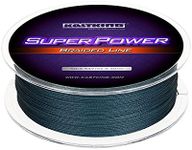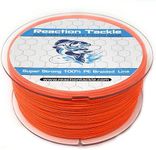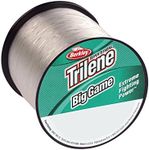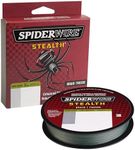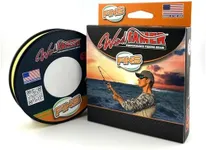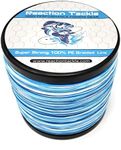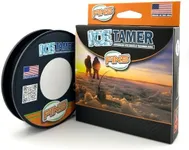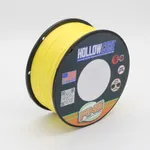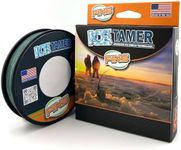Buying Guide for the Best Bass Fishing Lines
Choosing the right bass fishing line is crucial for a successful fishing experience. The line you select can affect your casting distance, sensitivity, and ability to reel in a catch. Understanding the different types of fishing lines and their specifications will help you make an informed decision that suits your fishing style and the conditions you'll be fishing in.Line TypeThere are three main types of fishing lines: monofilament, fluorocarbon, and braided. Monofilament is versatile and easy to handle, making it great for beginners. Fluorocarbon is nearly invisible underwater and has low stretch, which is ideal for clear water and detecting subtle bites. Braided line is extremely strong and has no stretch, making it perfect for heavy cover and long casts. Choose the type based on your fishing environment and experience level.
Line Strength (Pound Test)Line strength, measured in pounds, indicates how much weight the line can handle before breaking. For bass fishing, a line strength between 8 to 20 pounds is common. Lighter lines (8-12 pounds) are suitable for finesse techniques and clear water, while heavier lines (15-20 pounds) are better for heavy cover and larger bass. Consider the size of the bass you are targeting and the type of cover you will be fishing in when selecting the line strength.
Line DiameterLine diameter affects the line's visibility, strength, and casting distance. Thinner lines are less visible to fish and can cast further, but they may not be as strong. Thicker lines are more durable and can handle heavier fish and rough conditions. If you are fishing in clear water, a thinner line may be advantageous. In murky water or heavy cover, a thicker line might be more appropriate.
Abrasion ResistanceAbrasion resistance refers to the line's ability to withstand wear and tear from rocks, vegetation, and other underwater obstacles. High abrasion resistance is important when fishing in areas with a lot of cover or structure. If you frequently fish in such environments, look for lines specifically designed to resist abrasion to prevent break-offs and lost fish.
Line StretchLine stretch affects sensitivity and hook-setting power. Lines with low stretch, like fluorocarbon and braided lines, provide better sensitivity and quicker hook sets, which is beneficial for detecting light bites and fishing in deep water. Monofilament has more stretch, which can be forgiving and help prevent the line from breaking during sudden movements. Choose a line with the appropriate stretch based on your fishing technique and the type of lures you use.
VisibilityThe visibility of the line underwater can influence your success in catching bass. Clear lines are less likely to spook fish, making them ideal for clear water conditions. Colored lines, such as green or blue, can blend in with the water and vegetation, making them suitable for murky or stained water. Consider the water clarity and the behavior of the bass in your fishing area when selecting the line color.
